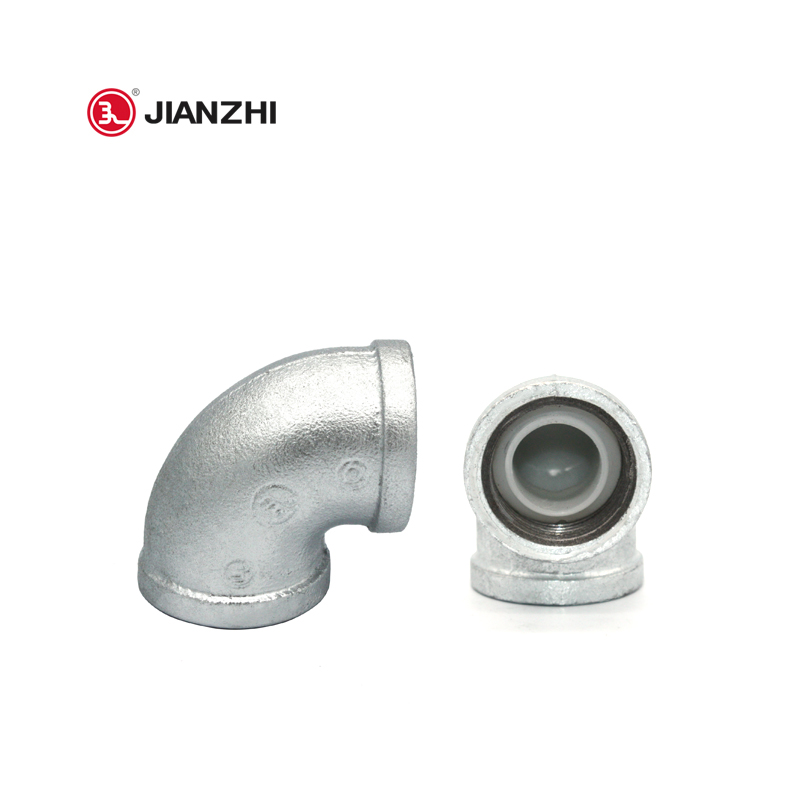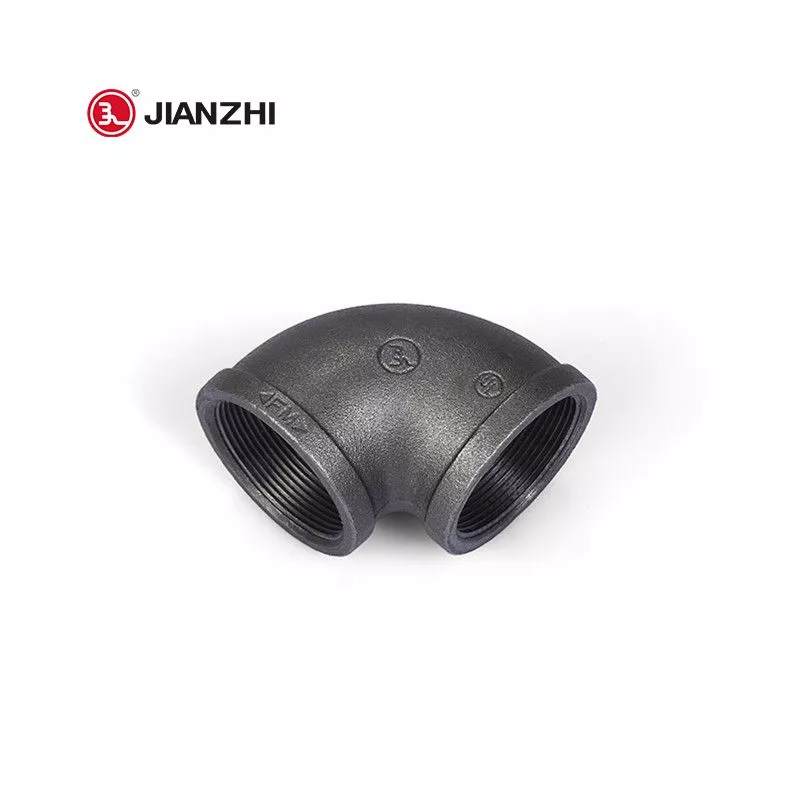Elbow fittings are one of the most common fittings used in construction today. They are versatile and come in a variety of sizes and shapes, so it’s important to understand how they work before starting any project involving elbow fittings. At Jianzhi fittings, we’ll cover everything you need to know about elbow fittings, including what they are, how to properly install them, what types of elbow fittings are on the market, and more!


What is elbow pipe fitting?
Elbows are pipe fittings used in piping systems to connect two pipes of the same or different nominal diameters. The elbow is bent at a certain angle, so that the straight pipe is connected at a certain angle, thus realizing the change of direction. Elbow is one of the most widely used of all pipe fittings, widely used in plumbing, electric power, shipping, heating, papermaking, metallurgy, petrochemical, chemical, petroleum, natural gas and other industries.
Materials of elbow pipe fitting?
Common elbow materials are: carbon steel, stainless steel, alloy steel, copper, copper alloy, plastic and so on. The elbow material of Jianzhi is malleable iron. It is a kind of carbon steel.
Classification by shape: long radius elbow, short radius elbow, U-shaped elbow, etc..
Classification by connection: welding elbow, flange connection elbow, threaded connection elbow, etc..
What elbow pipe fitting used for?
Elbow fittings are used in the plumbing industry to guide the flow of water. They can be installed at an angle using a T-shaped device (known as an elbow fitting) or used to connect two pipes together without crossing them (90 degrees). Typically, a 90-degree elbow has male threads at the end for connection to a water pipe. In most cases, the other end of the elbow is internally threaded and is installed in a male fitting such as a valve or flange.
Elbow fittings are also used in gas piping because they reduce the required number of fittings to connect two gas lines, which ultimately lowers the chance of leaks.
Proper installation of elbow fittings can decrease the chances of leaks by up to 50 percent. If you lack sufficient plumbing knowledge or cannot install them yourself, it’s recommended to hire a professional expert – your best bet. Nonetheless, there are some DIY techniques that can help you tackle issues like leaks.
If you are working with gas pipes, it is recommended to install the elbows first and then connect them to the T-fittings (which are installed after the elbows). This provides support to your piping system, ultimately lowering the likelihood of leaks, if any.
What is The Use of Elbows in Pipe fitting?
Elbows in pipe fitting are crucial components used to change the direction of piping systems. They are engineered to offer a smooth transition between two sections of pipes, enabling the fluid flow to follow a different course with minimum resistance and pressure loss. Here are some key aspects of elbow use in pipe fitting:
- Directional Change: The primary function of an elbow is to turn the direction of the fluid flowing through the piping system. This could be a change in direction horizontally, vertically, or in any angled direction depending on the installation requirements.
- Connection Types: Elbows can connect pipes of various sizes and materials. They come in different types like male or female threaded, buttweld, socketweld, and flanged, to cater to different installation needs and preferences.
- Angularity: Elbows are available in various angles, with 45-degree and 90-degree elbows being the most common. However, for more specific directional changes, elbows with different angles like 22.5 degrees, 60 degrees, and even custom angles are available.
- Reduced Pressure Loss: A well-designed elbow minimizes pressure loss in the system. The smooth and curved design of an elbow allows for an efficient flow of fluid with lesser friction than if a piping system were to use sharp angle fittings.
- Versatility: Elbows are used in a wide range of applications, from household plumbing systems to large industrial installations. They are essential in any system where pipes need to traverse obstacles, enter machinery, change elevation, or simply redirect flow.
- Material Variety: Depending on the fluid type, temperature, and pressure, elbows are made from various materials. Common materials include PVC for low-pressure and corrosive environments, stainless steel for high-pressure and temperature systems, brass for both durability and corrosion resistance, and carbon steel for high-pressure systems without corrosive elements.
- Space Saving: By enabling directional change, elbows help in designing compact piping systems that efficiently use the available space, especially in restricted or confined areas.
Elbows are indispensable in creating efficient, effective, and flexible piping systems. Their design and material composition ensure that they meet the requirements of the specific applications they are designed for, contributing to the overall reliability and performance of piping systems.
How Do You Calculate The Radius of an Elbow Pipe?
The radius of an elbow pipe, particularly in piping systems, is crucial for ensuring fluid flow efficiency and determining the space required for piping layout. Calculating the radius of an elbow involves understanding its type—whether it’s a long radius (LR) or short radius (SR) elbow. Here is a simple guide to calculate the radius of an elbow pipe:
1. Understand the Types of Elbows:
- Long Radius (LR) Elbows: Typically have a radius equal to 1.5 times the nominal diameter of the pipe. They are used in larger pipes where the fluid or gas flow is more gradual and requires less force.
- Short Radius (SR) Elbows: Typically have a radius equal to the nominal diameter of the pipe. They are used in smaller pipes where space is limited, and the flow needs to be directed sharply.
2. Identify the Nominal Diameter of the Pipe:
The nominal diameter (often referred to as “nominal bore”) of the pipe is critical for calculating the radius. This measurement is usually available from the pipe specifications or can be measured directly.
Calculation Formula:
For Long Radius (LR) Elbows:

For Short Radius (SR) Elbows:

3. Example Calculation:
Assume you have a pipe with a nominal diameter of 4 inches.
- For a Long Radius (LR) Elbow:
Radius =1.5 * 4” = 6”
The radius of the LR elbow would be 6 inches. - For a Short Radius (SR) Elbow:
Radius =1 * 4” = 4”
The radius of the SR elbow would be 4 inches.
Additional Considerations:
- The given formulas provide a basic guide for standard LR and SR elbows. However, for more specialized fittings or custom designs, the calculations may vary based on the manufacturer’s specifications.
- The calculated radius is for the centerline of the elbow’s curve. This is crucial for spatial planning and ensuring adequate room for the installation.
- Understanding and calculating the radius is also essential for determining elbow angles and assessing flow resistance, which can ultimately impact system efficiency.
Elbow Pipe Fitting vs Bends In Pipe Fittings
- Design and Construction: Elbows are discrete fittings with a fixed angle, while bends are formed by smoothly curving the pipe itself.
- Radius and Angle Flexibility: Elbows have a sharper turn and a standard angle, whereas bends offer a smoother transition with customizable angles.
- Pressure Drop and Flow Efficiency: Bends are more efficient in terms of fluid dynamics, experiencing lower pressure drops and less flow disturbance compared to elbows.
- Space and Application Considerations: Elbows are more suitable for tight spaces and where specific directional changes are needed. Bends are ideal for applications requiring a smooth flow with minimal pressure loss.
